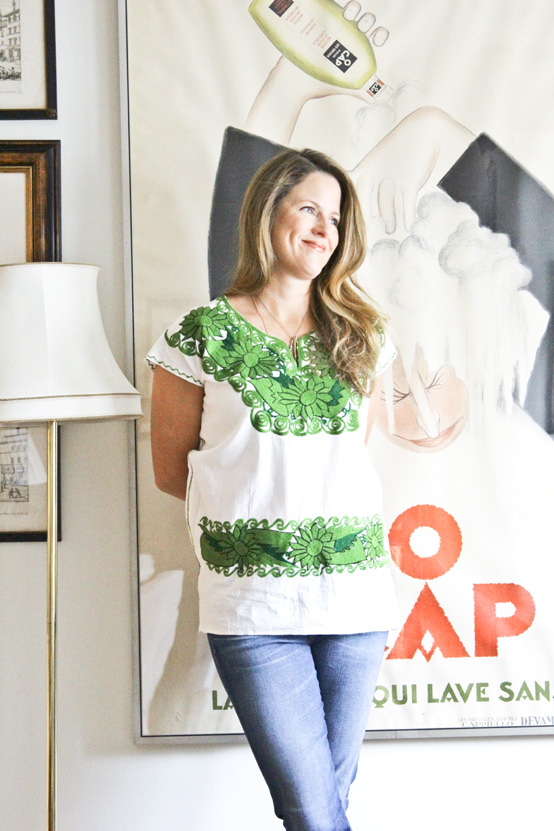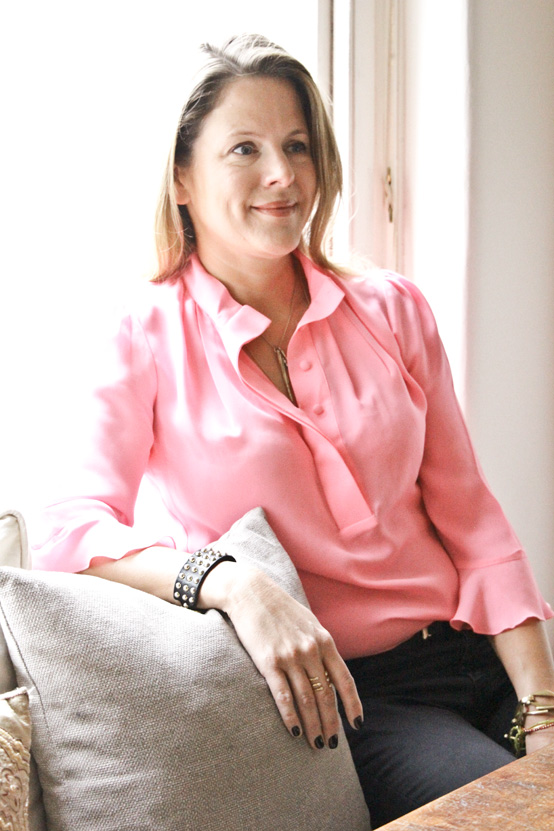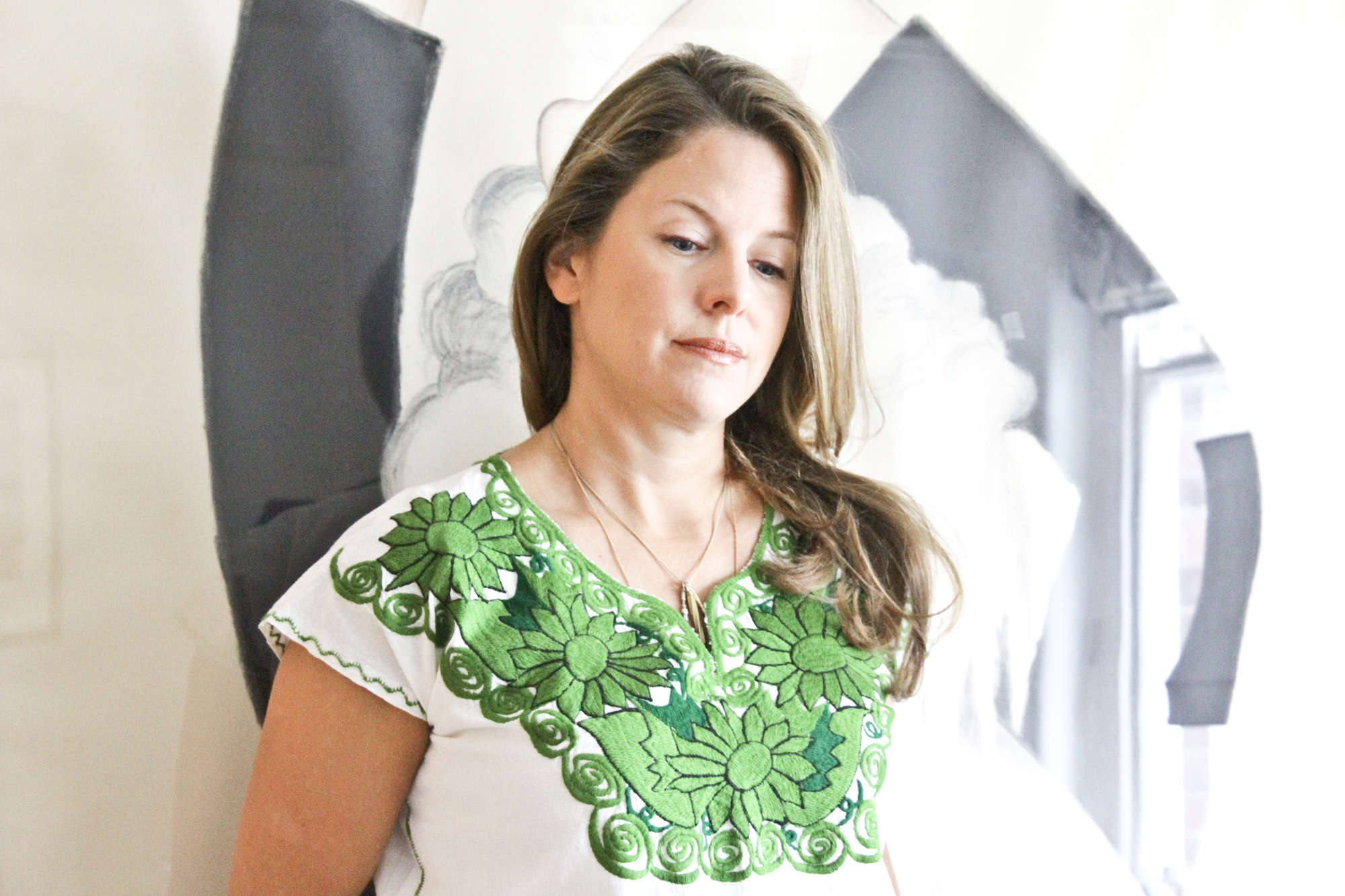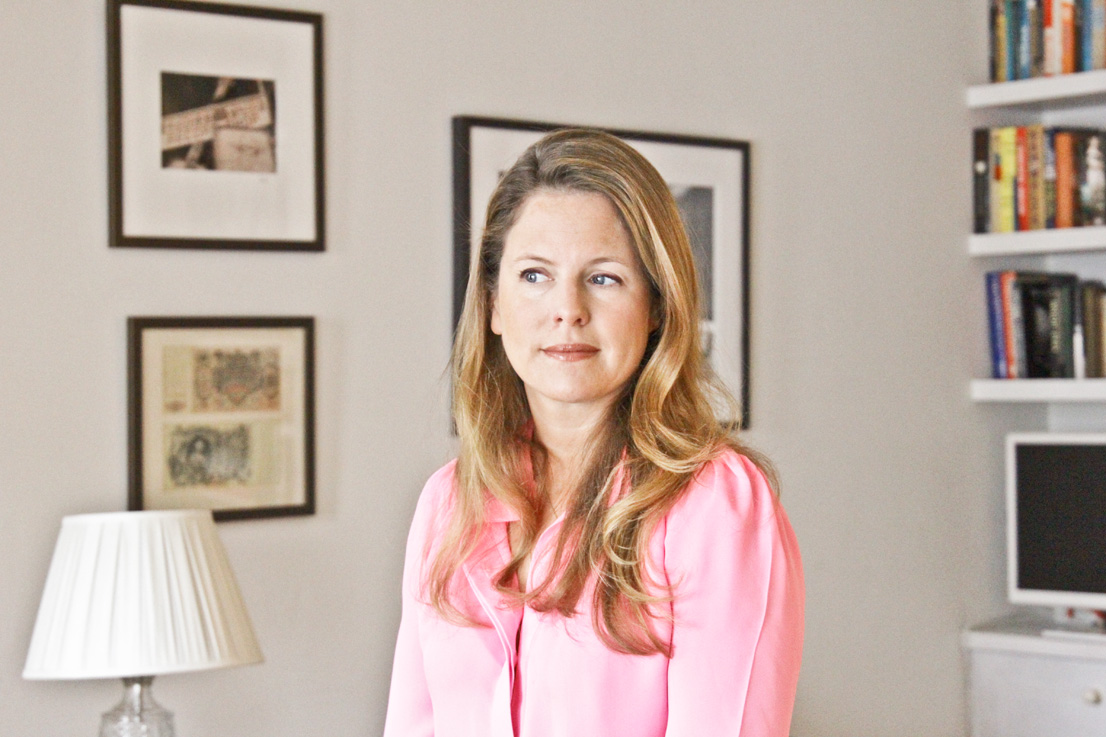We all have them: that one power piece that grounds your entire wardrobe. You feel naked without it and above all else, it’s the piece you start with each morning when pulling an outfit together. For Brett Tyne it’s a bag. Her home is filled with them. Flea market finds she’s picked up in her travels; special ones she’s inherited from her mother and grandmother over the years and, of course, a sea full of clutches by Wilbur & Gussie, the label she founded back in 2006 with business partner Lucy Lyons.
Walking through her wardrobe in her West London flat, it’s instantly apparent that Brett is all about the classics when it comes to her own style. It’s through her designs for Wilbur & Gussie that she gets experimental. After all, “a bag can instantly transform the most basic outfit,” she tells me. A subtle black evening clutch becomes a statement piece with a look-at-me broach detail. An every day envelope clutch is instant street style bait thanks to graphic multi-coloured prints. And, judging by the fact that the likes of Kate and Pippa Middleton are fans, it’s pretty safe to say it’s working.
Pre-shoot she sat down to talk to us about where her love for design started (her mum is to thank), the dynamics of working with a business partner (easier than you think), what it takes to run a successful accessories business and the New York flea market find that got away.
 I studied Art History mainly out of a deep respect for people who conceptualised and made things. I grew up surrounded by beautiful things. My mother collected and sold porcelain, and my grandmother’s flat was filled with fabulous antiques and wonderful objects. They weren’t necessarily worth a lot of money, but they were always interesting to me from a design standpoint. So there was a lot of visual stimulation in my environment growing up. My mum loved museums too so we’d spend hours on end visiting them. You had to either suck it up and get involved, or wait outside and be bored. I chose the former and discovered a world of intricacy and detail for the first time. It was truly inspiring.
I studied Art History mainly out of a deep respect for people who conceptualised and made things. I grew up surrounded by beautiful things. My mother collected and sold porcelain, and my grandmother’s flat was filled with fabulous antiques and wonderful objects. They weren’t necessarily worth a lot of money, but they were always interesting to me from a design standpoint. So there was a lot of visual stimulation in my environment growing up. My mum loved museums too so we’d spend hours on end visiting them. You had to either suck it up and get involved, or wait outside and be bored. I chose the former and discovered a world of intricacy and detail for the first time. It was truly inspiring.
After university I moved to New York and got a part time job working in an antiques store in the West Village while I was doing an internship at the Guggenheim in Art Education. Randomly, what I learned at the Guggenheim got me into graphic design and led me to apply for a position at GQ magazine in the art department. That chapter ended and I got a job in production on a film, where the art department was making elaborate beaded curtains. They showed me how to produce them and in my free time I expanded upon that and started to make jewellery, which I sold privately and to a few boutiques. I quickly learned that although it was cathartic and fun because no two pieces were the same, I would never really be able to sell bulk and make money. I knew I wanted to make and sell my own thing but I just didn’t know what at that stage.
Getting Wilbur & Gussie set up took forever. [My former business partner] Lucy and her mother had a small fashion business together and I was working on films, so we did everything in our free time. Initially Lucy wanted to make swimwear but I knew I couldn’t get passionate about bikinis. We both loved textiles and accessories and shared a similar aesthetic so we settled on bags, but in fabric. We knew nothing about leather and made a conscious effort not to try and compete with those that did. The idea to put jewelled brooches on the clutches came from seeing a hair clip in Butler and Wilson. It was so beautiful and we thought: wouldn’t that be gorgeous on a bag. The quality was superb but it cost a fortune for what it was. The challenge from that point onwards was to find brooches that looked big bang for not too much buck. You make loads of mistakes starting out because you don’t know where to look. Sourcing was absolutely the toughest part, but we got there in the end!
I think we definitely saw it as a business opportunity more than anything else. The initial idea was to make a bag where you could change the strap, sort of like the watches that everyone had in the 80’s. Lucy had experience with production and buying and said immediately ‘That bag won’t sell’, and she was right. We made it, and it took forever to work out from a design standpoint, and nobody wanted it because the multiple detachable pieces were too hard to merchandise. So our first season we had 3 styles: that one, a tote and an envelope clutch bag, all in beautiful silks. It was a small, compact collection, and 2 of the 3 styles sold. That clutch is today our most popular shape. We’ve sold thousands. At that point in time we were also lucky because not many people were making clutches. We caught the crest of the clutch-bag wave. I love beautiful clothes and have a huge appreciation for tailoring but there is absolutely no way I could design or let alone make them. I went to a sewing school in New York and took night classes for 8 weeks. It was a disaster! With bags you don’t have to worry about them ‘fitting’; I also think a good accessory can make a mediocre outfit look perfectly fabulous.
To some degree I think the designs probably do reflect me but I definitely don’t design for myself. My starting point is always prints and textiles. I love going to the trade fairs to source materials and I used to love going to all the fabric shops when I was travelling to source prints. Once production grew, I started to design my own prints, but I’m still always on the hunt for end of roll pieces to make limited edition bags.
[show_shopthepost_widget id=”1442268″]
Running any creative business is so much about business: negotiating, managing and juggling a multitude of professional hats that are not design-related, but the design process for me is the best part. Each season I start by drawing out the existing shapes and I aim to add 2-3 more to the collection. I like to try new styles for 3 seasons so if one hasn’t sold very well by then, I pull it from the collection. It’s always good to have something new loitering in the pipeline just in case something doesn’t quite work out as I’ve envisioned. Once the shapes are drawn I start to look at materials I’ve sourced or designed. I have quite a big archive now of fabrics. Each season I design the printed silks, but the embossed and embroidered materials are sourced from Italy. It’s incredible what the factories can produce. Once all the materials and styles have been put together, I break the collection down into types of clutch and think about whether they are very formal, semi-formal or casual and see if anything is missing. I test myself at this stage and merchandise what I’ve designed. If I can’t make something work I will either add another bag that sits with it or kill it from the collection altogether. I’ve learned that if a bag doesn’t have a home in the collection at incubation, it will most likely end up being pulled. I am pretty methodical about that!
We caught the crest of the clutch-bag wave. I love beautiful clothes and have a huge appreciation for tailoring but there is absolutely no way I could design or let alone make them. A good accessory can make a mediocre outfit look perfectly fabulous.
Lucy’s style is more sophisticated and matchy compared to mine. I wear a lot of black but I do love colour and mad prints and I’m not opposed to the occasional clash. In the initial days, I was consistently drawn to bold colour blocks and vibrant prints, whereas Lucy was always favouring the prettier, more feminine prints and colour combinations. She constantly had to remind me that there is a pastel/neutral girl out there who might want one of our bags! Now we try to cater to both customers. I’d like every woman to find at least one bag they want to own in our collection. Working as a team, we were always very respectful of each other’s choices, but obviously styles and colours had to go. We would ask the question: will you die if we don’t run that print/style? If the answer was yes, then we’d run it. It’s a great question because it really makes you figure out if you can live without it. I still ask myself this question every season when I have to make difficult design decisions.
So many fashion brands are named after their founders, and when we were starting we absolutely knew that we couldn’t name a handbag brand after someone called ‘Brett’! Since Lucy and I had known each other from teenage years, we tried to find something that was mutual in our lives and decided upon our pets. Lucy grew up with a big, grey cat called Wilbur, and Gussie was our family’s Westie. I knew Wilbur, and she knew Gussie, hence the name was born.
 It’s not very ‘fashion’ but I try to walk to and from work so invariably trainers and a backpack are involved in my outfit choice in the morning. I have a Wilbur & Gussie leather tote bag that I fold up and put inside my backpack and I keep my bespoke Truffle and Ocho pouch at the office so I can take it out for dinner. At the moment I’ve had to stop myself buying printed scarves. I’m nuts about Emma Shipley’s designs. My personal style is pretty classic. My uniform is generally jeans, blouse and jacket. I think a good tailored jacket can spruce anything up. Otherwise, I am boringly methodical when it comes to buying things. I find the process of returning to be a drag. I used to be quite an impulse buyer and would then kick myself when I would find something I liked better than what I had already bought. Now I do research before I buy so I don’t have to return things.
It’s not very ‘fashion’ but I try to walk to and from work so invariably trainers and a backpack are involved in my outfit choice in the morning. I have a Wilbur & Gussie leather tote bag that I fold up and put inside my backpack and I keep my bespoke Truffle and Ocho pouch at the office so I can take it out for dinner. At the moment I’ve had to stop myself buying printed scarves. I’m nuts about Emma Shipley’s designs. My personal style is pretty classic. My uniform is generally jeans, blouse and jacket. I think a good tailored jacket can spruce anything up. Otherwise, I am boringly methodical when it comes to buying things. I find the process of returning to be a drag. I used to be quite an impulse buyer and would then kick myself when I would find something I liked better than what I had already bought. Now I do research before I buy so I don’t have to return things.
I used to be trend driven but after a few years of trying to stay on top of it, I started to see patterns evolve with both our customers and wholesale buyers, and I stopped. One season stripes were very on trend and we produced a striped clutch. It was retro and cool but nobody really bought it. Another season polka dots were back in so we did polkas and they didn’t sell either. Lucy and I would deliberate for hours over the right hues for the season and finally, we began to realise that people want to wear a bag more than once, so it’s better to have a range of good strong solid colours and throw in some great prints and keep away from trends. They are necessary for press attention but not for mass production in our business.
In terms of the person who has been the biggest impact on my style, it’s cliché to say but it has to be my grandmother. She was a supersonically elegant Southerner living in Nashville, Tennessee. Her taste and style were immaculate; I don’t think I ever saw her in trousers. She was fortunate enough to travel a lot in her lifetime and she’d buy fabric wherever she went, which she would have made into clothes when she got home. She had the first interior decorators shop in Nashville, and I suppose, looking back she would pay as much attention to someone’s living room as she would to her attire. She curated rooms and she curated herself.
There is a fabulous store in NY that sells wonderful vintage pieces. I found a handbag that was a true work of art that I regret not buying, but I try to be Zen about it and tell myself that something even more special will show itself to me in the future. One of my favourite recent purchases is a pair of Terry de Havilland black suede boots with a gold heel and huge gold lightning bolt across the front. The minute I saw them I had to have them. They’re elegant and totally mad.
This interview has been edited and condensed. Brett was shot in her home in West London.


